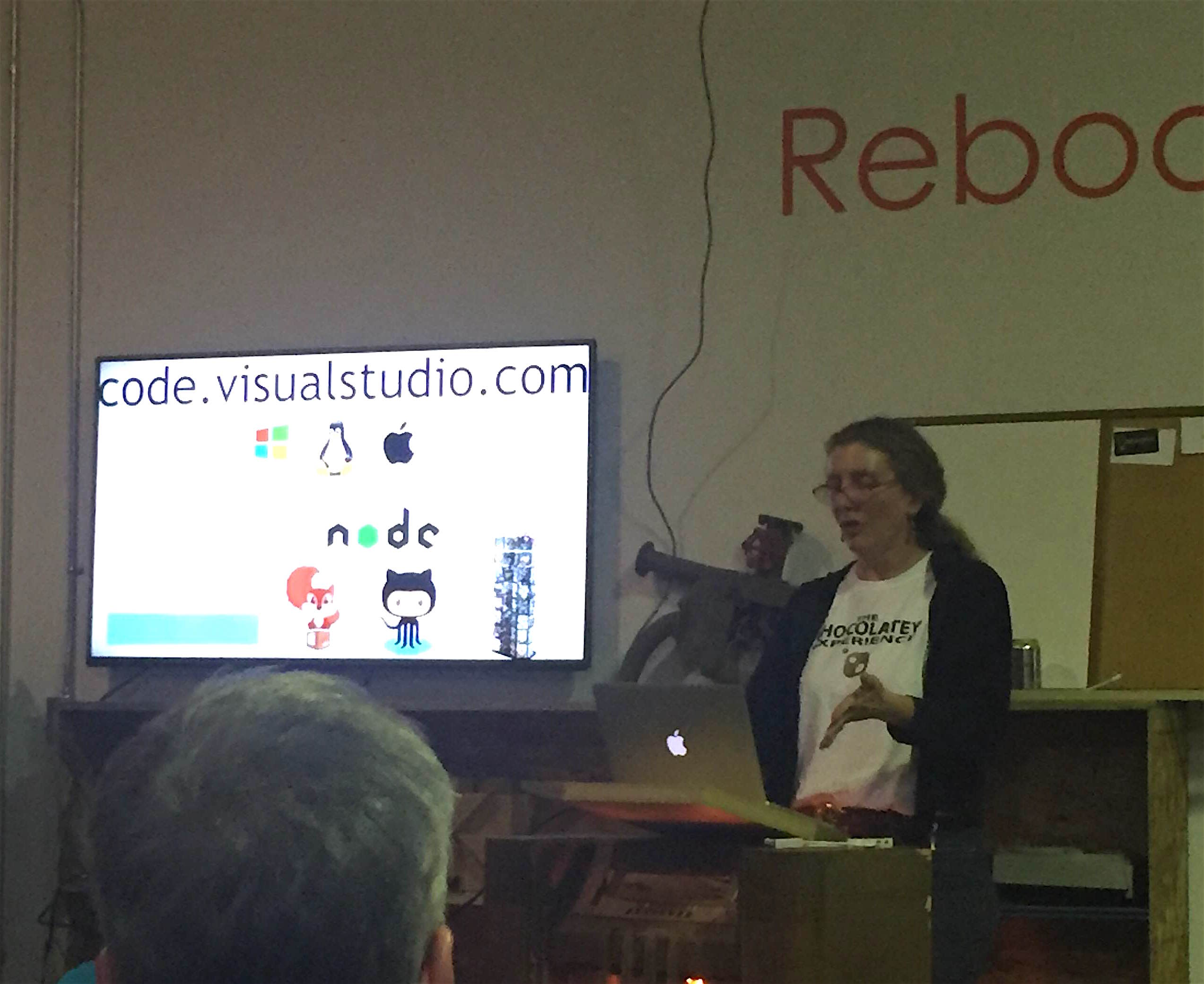
Uwe Heiss presents “Zeebo Placebo“
What can Wikipedia tell us about networks of ideas? Can the healthcare community use the placebo effect to its benefit? How do you hack a webcam?
Presenters at Friday’s Tech Show and Tell event answered these questions and tackled other topics in a series of five-minute lightning talks. Some 60 people showed up at Burlington’s Generator maker space for the event, which featured 11 speakers describing their tech projects, followed by Generator-sponsored pizza and beer.
UVM graduate student Andy Reagan introduced Quokka Labs, a company spun off from the Hedonometer technology — which tracks sentiment on Twitter — developed at the UVM Computational Story Lab.
Reagan said the new company will be using Twitter sentiment-tracking in areas like finance, marketing, politics and breaking news.
Another UVM graduate student, Mark Ibrahim, introduced his work tracking Wikipedia first-link networks to figure out how ideas connect. That is, he followed the chains of ideas you get when you click through to the very first link in all 4.7 million Wikipedia articles. Those paths, he said, flow from the very specific to the very concrete. Where do you end up if you keep clicking the first link, starting at, say, banana or chair?
“You’ll always end at philosophy,” he said.
Bradley Holt, a developer advocate at IBM, introduced a deployment tracker he built to figure out how often the company’s applications are being deployed. That application, just like many other projects in the company’s cloud services division, is open-source.
 IBM isn’t the only company that’s making an open-source push. Developer Julie Lerman — a .NET programmer who literally wrote the book on Microsoft’s Entity Framework — bought a MacBook a week ago. As she connected it to the projector, she pointed to it, eyes wide, a symbol of how much Microsoft’s culture has evolved.
IBM isn’t the only company that’s making an open-source push. Developer Julie Lerman — a .NET programmer who literally wrote the book on Microsoft’s Entity Framework — bought a MacBook a week ago. As she connected it to the projector, she pointed to it, eyes wide, a symbol of how much Microsoft’s culture has evolved.
“Microsoft has been seen as the big bad wolf,” she said, “but that’s changed enormously.”
Thanks to the company’s new push toward open-sourcing, and its work in the cross-platform arena, Lerman said she can now do a lot of her work on a Mac — though she admitted she’d probably end up having to partition the hard drive and install Windows at some point.
Sara Simon, a web developer at Vermont Public Radio (and, full disclosure, my friend), noted that since she works for a public radio station, all the work she does on the job is open source. She presented three Twitter bots she recently created — one to tweet out stories from VPR’s archives, one to tweet out sewage overflows (affectionately known as the “poop bot” in the newsroom) and one to tweet out hospital inspection reports.
Shane Celis (also my friend) took the stage to make a plea for fiction and creativity in tech. With some exceptions, said the academic-turned-game-developer, “academia eroded my inclination to use fiction.”
Celis has since created a game inspired by Harry Potter that he’s brought to several area maker faires. Before children even get to the video-game part, they must choose a wand with one of four different “cores” — including “eyelash of cyclops” and “scale of sea monster” — and create a wand. But, confided Celis, the wands are actually just chopsticks.
The show and tell event grew out of a conversation on a Burlington developer Slack board about ways to connect the area tech community. Organizer Zev Averbach said he hopes it will be the first in a regular series of events, likely organized through the Vermont Coders Connection Meetup group.
Here’s a video of the event, courtesy of Shane Celis.
